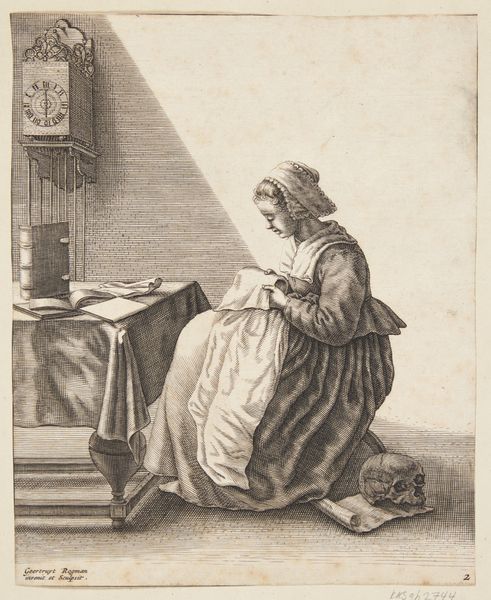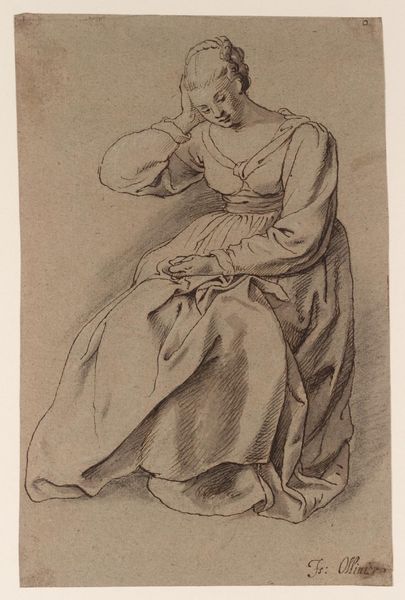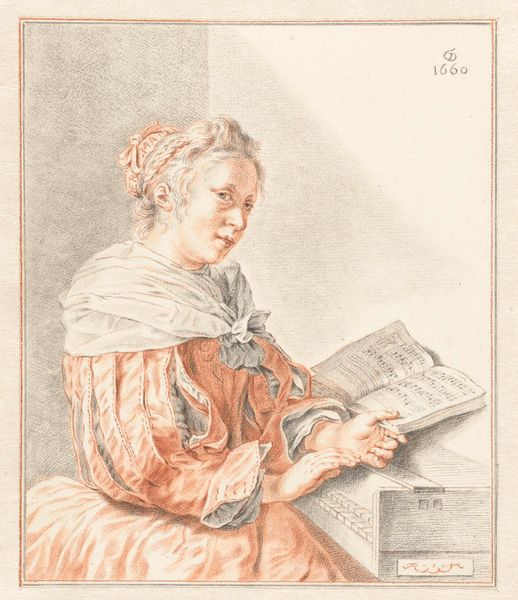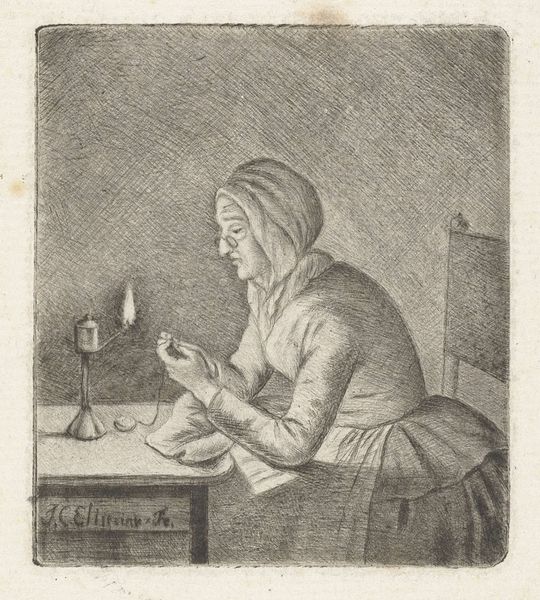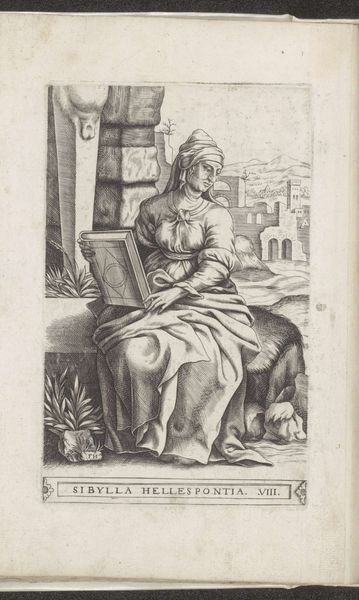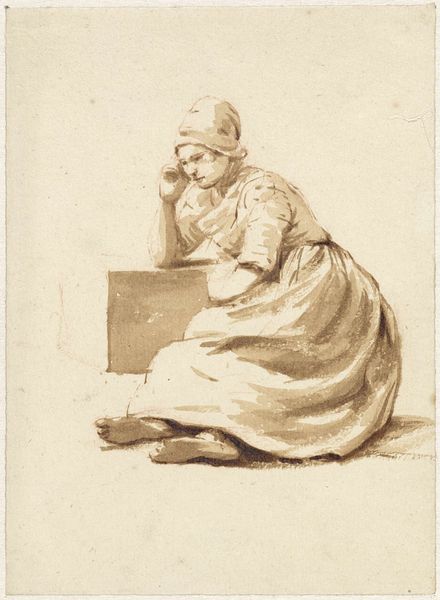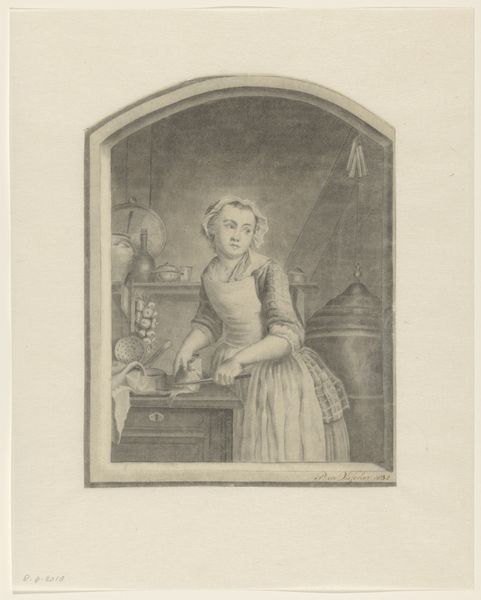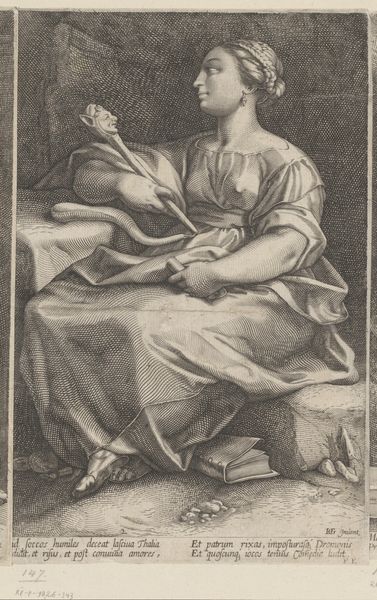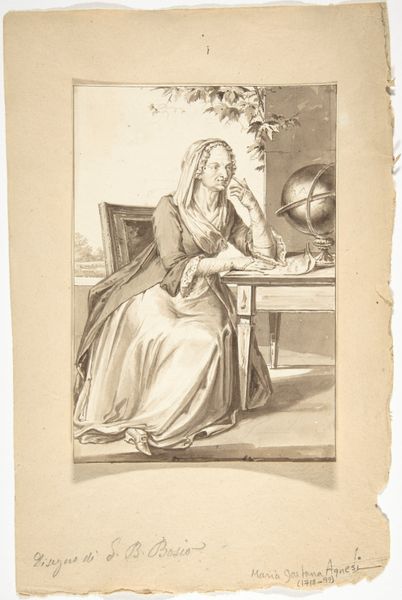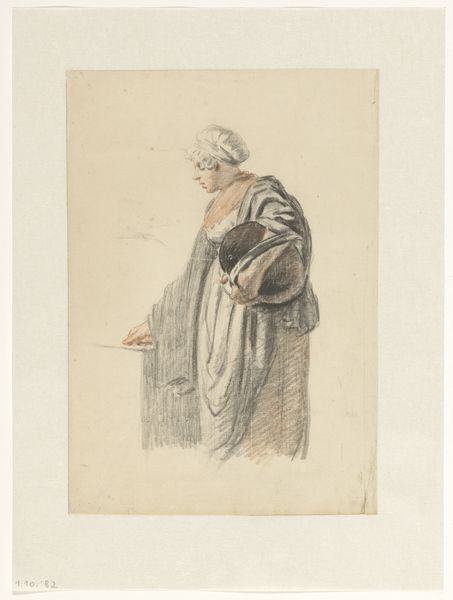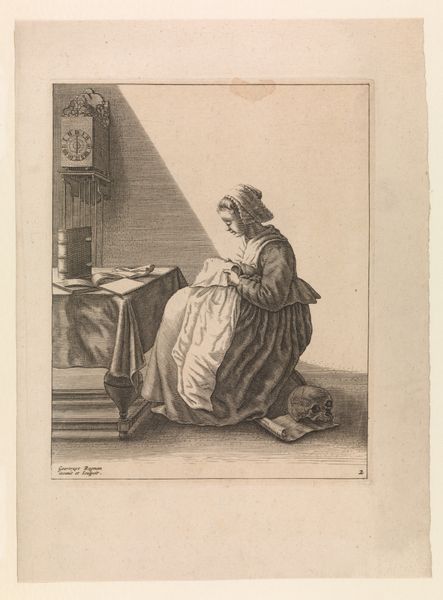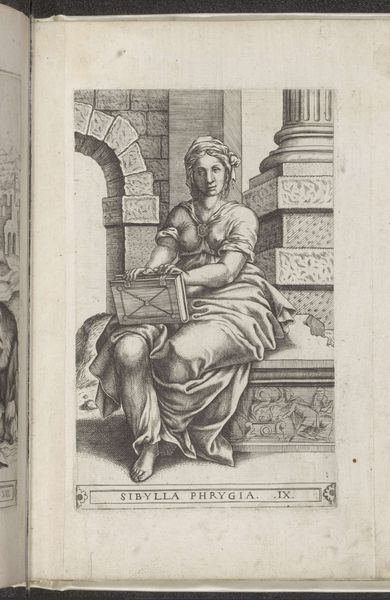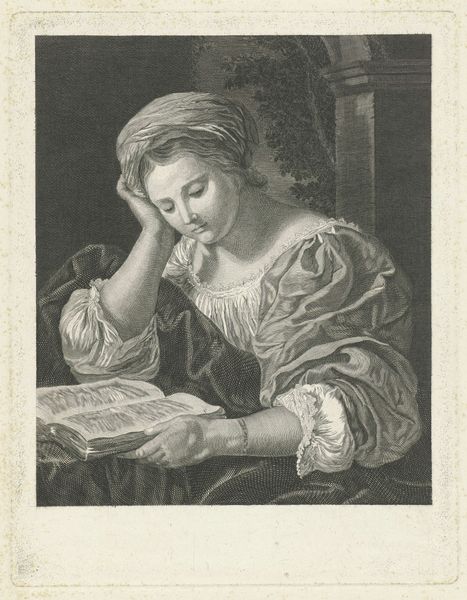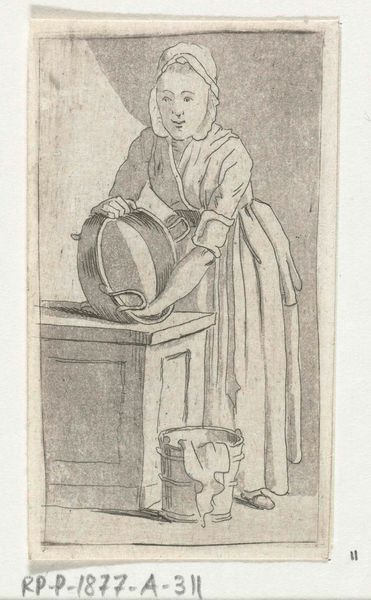
Dimensions: height 86 mm, width 50 mm
Copyright: Rijks Museum: Open Domain
Curator: This pencil drawing by Abraham Delfos, titled "Zittende, schillende vrouw," which translates to "Seated Woman Peeling," was created sometime between 1741 and 1820. It now resides here at the Rijksmuseum. Editor: There's an immediate stillness about this work that draws me in. It's humble. Her downward gaze, the subtle tones of the paper—it all feels very intimate, as if we are peering into a private moment. Curator: Absolutely. The medium and the artist’s light touch invite a specific reading, don't you think? This quiet moment depicted encourages reflection upon gendered labor and domestic life in the 18th century. It serves to document the everyday. Editor: I see it, yes, but the action of peeling, though mundane, is also deeply symbolic. Skin is a boundary, a protection. What does it mean for her to be removing this layer? Is it simply preparing food, or is there a shedding of self involved? Perhaps, even a release of some sort? The peeling motion can be meditative too. Curator: Interesting point. Consider, too, the period in which this was created. With academic art and realism influencing art production, what is the role of this particular woman’s labor within that frame? We often see depictions of leisure, of the upper classes, but what does it mean to place this specific labor on view in this fashion? It's almost subversive. Editor: Indeed. Look how the basket and various geometric lines seem to encircle her, highlighting the significance of both place and figure. Curator: The artist, though less widely known now, contributes to a broader conversation about class and labor. In placing her image on paper, Delfos immortalizes this anonymous worker, demanding her inclusion in the visual history of the era. It brings awareness to the role of women. Editor: The way this connects the visible to the invisible forces around it gives it lasting power. It seems almost archetypal to see an overlooked character as a main figure, with an ordinary basket now infused with this sense of familiarity—reminding us of how images carry deep associations over time. Curator: Precisely. Examining art through the lens of the historically overlooked grants new dimensions to canonical narratives. Editor: Looking closely at these details—at how Delfos positions this woman both within and beyond her work—opens to questions that still reverberate today. Curator: It certainly complicates and enriches our understanding of not only art history, but broader cultural values as well.
Comments
No comments
Be the first to comment and join the conversation on the ultimate creative platform.
